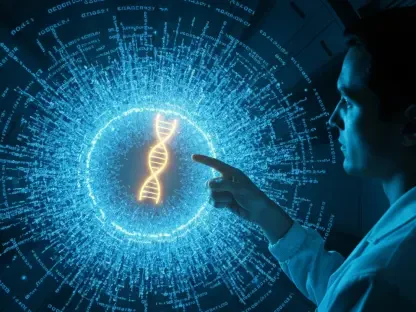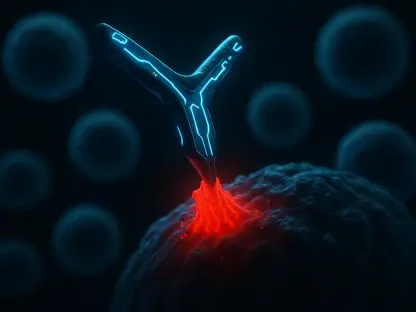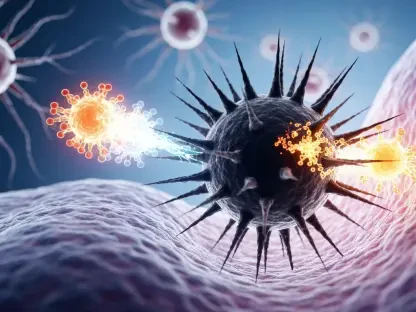In the realm of genetic engineering and de-extinction science, researchers find themselves on the cusp of extraordinary breakthroughs as they attempt to resurrect the woolly mammoth, a species that disappeared from Earth thousands of years ago. As of 2025, an unexpected byproduct of this ambitious project has emerged—”woolly mice,” small creatures with distinctive traits akin to their prehistoric ancestors. This development underscores both the potential capabilities and the myriad challenges associated with genetic revival efforts. The progress achieved marks a significant milestone while simultaneously highlighting ethical and ecological concerns.
Exploring the Woolly Mammoth Revival Project
Ambitious Undertakings in Genetic Engineering
Aimed at reversing extinction, the woolly mammoth project represents a cutting-edge endeavor at the intersection of genetic engineering and conservation biology. This effort involves incorporating mammoth-like genes into the genome of the Asian elephant, creating a creature exhibiting both mammoth and elephant characteristics. Researchers are utilizing advanced techniques such as induced pluripotent stem cells (iPSCs), which offer the possibility of developing diverse tissues using reprogrammed adult cells.
The drive to create the hybrid stems from the close genetic relationship between the Asian elephant and the woolly mammoth, which share nearly 99.6% of their DNA. The goal is to produce a viable elephant-mammoth hybrid, with expectations set for initial outcomes in the upcoming years. Such scientific undertakings have ignited excitement in the field but have also prompted deeper reflection on the technical, ecological, and ethical intricacies that must be navigated.
The Woolly Mice Phenomenon: An Accident or Achievement?
The unplanned creation of woolly mice, arising as an unintended consequence of the mammoth project, offers fascinating insights into genetic science. These mice possess a strikingly thick, golden-brown coat, mimicking the characteristics of mammoths. The thick fur was achieved by introducing genes linked to hair length, texture, and pigmentation into mouse DNA. Researchers initially aimed for cold adaptation in these genes, but the full extent of their effectiveness in conferring resistance to freezing temperatures remains indeterminate.
Woolly mice serve as a testament to the unpredictability that often accompanies genetic modifications. Their existence raises questions about the broader implications of altering an organism’s genetic makeup, providing a tangible glimpse into what is possible and what outcomes might surprise even the experts involved. This experiment not only underscores triumphs in genetic science but also emphasizes the unpredictability inherent in such ambitious explorations.
Ethical and Ecological Considerations
Balancing the Benefits and Risks
The potential ecological benefits of reintroducing mammoth-like creatures into arctic regions are substantial. Proponents suggest that these creatures could restore degraded habitats and aid in climate change mitigation by promoting Arctic grasslands, enhancing biodiversity, and supporting carbon sequestration efforts. By mimicking the ecological roles once played by mammoths, such reintroduction might contribute to landscape-level ecological stability. However, these benefits must be carefully balanced against practical challenges and potential ecological disruptions.
Concerns have been voiced about the diversion of resources from conserving endangered species, with critics arguing that priority should be given to preventing current extinctions. The introduction of genetically engineered organisms into the ecosystem also poses questions about adaptation, potential hybrid fertility issues, and unforeseen ecological consequences. These debates highlight the importance of balancing scientific innovation with a thoughtful evaluation of impact on the natural world.
Ethical Debates Fuel Scientific Discourse
On the ethical front, the revival of mammoths through genetic engineering raises profound questions about human intervention in nature. Supporters envision the scientific achievement as offering speculative solutions to environmental challenges while expanding the horizons of natural history. Detractors, however, argue that such endeavors might overlook the ecological roles of existing species and question the ethical appropriateness of reviving extinct species for conservation purposes. Ethical debates focus on whether efforts should be channeled into conserving endangered species that still inhabit the Earth, ensuring that resources are put to the most effective use in preserving current biodiversity.
The dialogue within the scientific community surfaces wider considerations regarding humanity’s responsibility toward nature and the moral implications of genetic manipulation. These discussions underscore the imperative for robust ethical frameworks to guide scientific advancements, ensuring that innovation proceeds in a mindful and responsible manner.
The Future of De-Extinction Science
Key Challenges and Opportunities
The creation of woolly mice demonstrates the potential power of genetic engineering but also brings to light key challenges facing de-extinction initiatives. One major concern is the complex array of adaptations required for survival in Arctic environments, a task that extends beyond mere replication of physical traits like fur. Additionally, even with successful genetic replications, these hybrids might need substantial human assistance, as they would lack the traditional knowledge necessary to thrive in the wild, typically passed from one generation to the next in natural settings.
The feasibility and timeline of realizing a true mammoth-elephant hybrid remain subjects of ongoing debate, considering the multitude of variables that influence an organism’s ability to adapt and survive. Researchers must grapple with dual challenges: achieving successful de-extinction while ensuring an ecological fit conscionable with modern-day environmental dynamics.
Broader Implications and the Path Forward
The woolly mice experiment symbolizes both the potential and the unpredictability inherent in de-extinction technology. As scientists look to apply these technological advancements to other extinct species like the passenger pigeon and thylacine, similar challenges and questions emerge. While these projects represent unique considerations, advances in genomic technologies are likely to fuel future efforts, stimulating innovation and discussions in conservation biology.
The woolly mice development highlights the need for extensive testing to understand the broader implications of genetic modifications across biological systems. This fosters a deeper appreciation of evolutionary genetics and the transformative potential of contemporary biotechnological tools. Compounding these considerations is the importance of forming sustainable strategies that align with ethical stipulations and ecological well-being.
Bridging Past and Present Through Genetic Engineering
In the burgeoning field of genetic engineering and de-extinction science, researchers are on the brink of groundbreaking advancements as they strive to bring back the woolly mammoth, a creature that vanished from our planet millennia ago. In 2025, an unforeseen outcome of this ambitious endeavor has surfaced—”woolly mice.” These tiny organisms possess unique features reminiscent of their long-lost predecessors, offering a fascinating glimpse into the power of genetic manipulation. This creation of woolly mice signifies both the vast potential and the array of challenges inherent in the realm of genetic revival. The strides made in this field represent a pivotal achievement, yet they also bring ethical questions and ecological implications to the forefront. The delicate balance between innovation and responsibility is crucial as scientists continue to explore the boundaries of bringing ancient species back to life. This journey demands careful consideration of the moral and environmental impacts alongside the pursuit of scientific progress.









